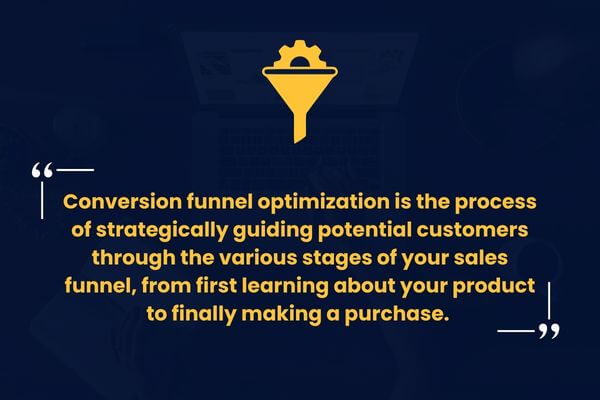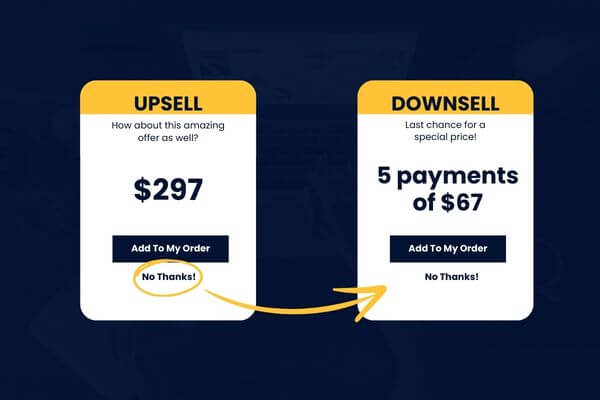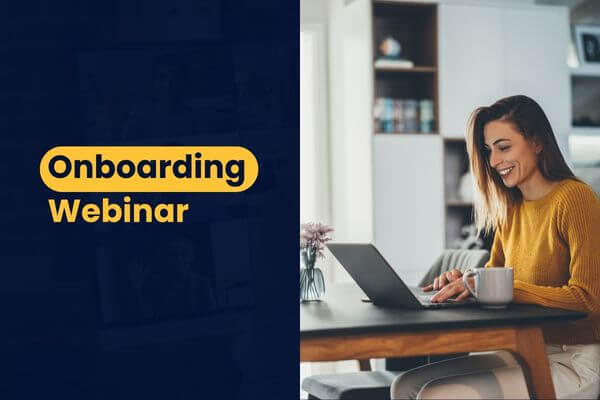Want to supercharge your sales funnels in 2024? Optimizing your funnel conversion is the key.
Funnel conversion is the lifeblood of your online business—without it, you’re leaving money on the table. So I thought, why not give you a “behind-the-scenes” look at 3 of the biggest “must-haves” I put into every funnel.
Whenever we’re working on a new funnel, one of the first things I do is look back at some old funnels to see which strategies have been working the best.
This year, I’ve found myself coming back to these 3 strategies. They’re all pretty simple, but they have a dramatic impact. What’s better than “low-lift, high-reward,” right?
Want insider access to the hottest strategies in digital marketing? Join the Expert Scale Facebook group today!
What is Conversion Funnel Optimization?
Let’s talk about conversion funnel optimization—it’s a HUGE part of your marketing strategy, and getting it right can seriously boost your sales!
Conversion funnel optimization is the process of strategically guiding potential customers through the various stages of your sales funnel, from first learning about your product to finally making a purchase.

The goal is to keep them interested and engaged at each step until they buy.
Why Funnel Optimization is Crucial for Your Online Business
Why should you care about optimizing offers in your sales funnel? Let me break it down for you:
- Maximizes ROI: Every dollar you spend on marketing brings in WAY more returns when your funnel is optimized. This means you get more bang for your buck, stretching your marketing budget further and generating higher profits without needing to increase your spending.
- Boosts Customer Lifetime Value (CLV): A killer funnel doesn’t just make a sale; it builds a relationship. This boosts your Customer Lifetime Value (CLV), as loyal customers keep coming back, increasing your revenue over time.
- Outshines Competitors: When your funnel is optimized, you can outspend competitors on acquiring new customers and crush the competition. More revenue per customer means more resources to reinvest in customer acquisition.
Common Funnel Pitfalls to Avoid
Even the best of us hit some roadblocks. Here are a few common pitfalls that can tank your funnel conversion rates:
- Complicated Processes: If your funnel has too many steps or is just plain confusing, potential customers will drop off faster than you can say “conversion.”
- Poor Targeting: You could have the best funnel in the world, but if you’re attracting the wrong crowd, it won’t matter. Your audience needs to be spot-on!
- Lack of Testing: Funnels need constant tweaking. If you’re not testing and refining, you’re leaving money on the table. Don’t just settle for initial data; keep pushing for better results.
Strategy #1 - Create at Least 2 Upsells

Alright, let’s jump into the first game-changing strategy: creating upsells.
Upsells are additional offers presented to customers after they’ve decided to purchase your main product.
Think of it like this: your customer is already in the buying mindset, so why not take advantage of that and offer them more value? Done right, upsells can dramatically boost your Average Order Value (AOV) and your overall revenue.
Choosing the Right Price Points

The key to a successful upsell is hitting the sweet spot with your pricing. You want to offer something valuable enough that your customers see the benefit, but not so expensive that it scares them away.
Here’s a quick guide to help you out, along with some context on the science behind pricing and why these price points work so well:
Low Ticket Main Offer: $27 – $67
Start with a low-ticket main offer. This is the initial product that gets your customer in the door.
At this price range, it’s affordable and lowers the barrier to entry, making it an easy decision for potential buyers.
Think of it as the hook that draws them in. For example, a basic digital course or an entry-level eBook fits perfectly here.
Upsell #1: $97 – $197
Your first upsell should be a step up from your main offer but still within a reasonable price range. This could be an advanced version of your initial product or a complementary product that adds more value.
The idea is to offer something that enhances the customer’s experience with the main product. For instance, if your main offer is a basic digital marketing course, your first upsell could be a more advanced module or a toolkit that helps them apply what they’ve learned.
Upsell #2: $197 – $297
The second upsell takes it a notch higher. This is where you offer something that provides significant additional value and is priced accordingly.
It’s typically a product or service that offers more in-depth knowledge, personalized support, or exclusive content. Sticking with the digital marketing example, this could be access to a private mastermind group or a series of live workshops.
Upsell #3: $297+
For your third upsell, go all out. This is your premium offer, designed for customers who are fully committed and ready to invest in the best you have to offer.
It’s something high-ticket that delivers immense value. This could be one-on-one coaching, a year-long membership program, or an all-inclusive bundle that combines several of your best products and services.
These price points work like magic because they’re strategically set to feel affordable yet packed with value, sidestepping the psychological barriers of higher prices.
By gradually bumping up the cost with each upsell, you’re not hitting your customers with sticker shock. Instead, you’re guiding them through a smooth, logical progression of value and investment.
Each upsell should clearly boost the main product’s value, making your customers feel like they’re getting an incredible deal and significantly enhancing their overall experience.
Strategy #2 - Simplify Downsells with Payment Plans

Now, let’s talk about downsells—a powerful yet often underutilized tool in your funnel conversion arsenal.
A downsell is an alternative offer presented to customers who decline your initial upsell. Instead of letting them walk away, you give them a chance to purchase at a lower cost or with a more manageable payment plan.
This strategy ensures you don’t miss out on revenue opportunities from customers who are interested but need a bit more flexibility.
Most marketers make the mistake of overcomplicating their downsells. They try to remove features or bonuses to create a “lighter” version of the upsell, but this often doesn’t work.
If the customer didn’t find the original offer compelling enough, simply stripping it down won’t make it more appealing. It’s all about making the offer easier to accept, not less valuable.
Creating Effective Downsells

Offer 3-5 Payment Plans
Instead of offering a watered-down version of your upsell, present the same high-value offer with a flexible payment plan.
For example, if your upsell is priced at $297, offer it as 5 payments of $67. This makes the purchase more manageable and attractive, especially for those on a budget.
Use Simple Pop-Up Boxes
Keep it simple, folks! When a customer declines your upsell, trigger a pop-up box with a straightforward message.
No long copy, no extra bonuses—just a headline and a button. This simplicity helps in making a quick decision without overwhelming the customer.
So, let’s say you’re selling a premium online course for $497. A customer declines your upsell.
Instead of losing them, offer the same course in a downsell with a payment plan: “Get the full course for just 5 easy payments of $99!”
With this approach, you’re not compromising on value, and the customer gets a more flexible payment option.
Pro Tips: Keeping Downsells Simple and Straightforward
When it comes to downsells, less is more. Here are some pro tips to ensure your downsells are effective and easy for customers to say “yes” to.
- Simplicity is Key: Don’t clutter your downsell with too much information. A clear, concise offer with a simple payment plan is most effective.
- Test and Optimize: Experiment with different payment plans to see what works best. A/B testing can help you find the sweet spot that converts the most customers.
- Maintain Value: Ensure the downsell retains the perceived value of the original offer. Customers should feel like they’re getting a great deal, not a compromised product.
Strategy #3 - Create An Onboarding Webinar

Onboarding is a crucial step in selling high-ticket offers. Years of experience have shown me a consistent pattern: customers who thrive with my high-ticket programs all have one thing in common – a smooth onboarding experience.
They want things done FASTER. They want results faster. They want to implement FASTER, they move with speed.
They don’t have time to sit around taking 12-hour courses. They want specific guidance and a lot of them want more access to my team and me.
Creating an engaging onboarding webinar is key to ensuring your high-ticket customers get the best start possible.
Onboarding webinars are also a golden opportunity to upsell. As you guide your customers through the initial steps, highlight additional premium services or products that can further enhance their experience.
Let’s take the example of a company selling a $2000 online business course. They implemented an onboarding webinar immediately after purchase, walking new customers through setting up their business website in the first week.
During the webinar, they also introduced a $500 one-on-one coaching package, which a significant number of attendees purchased, boosting their revenue further.
This approach not only ensured customers got off to a fast start but also created an opportunity for additional revenue by meeting their desire for more personalized support.
Since they’re already engaged and invested, they’re more open to hearing about these offers. You’ll find a percentage of those buyers are ready and willing to pay more for access and intimacy. Create something for them!
How to Create an Engaging Onboarding Webinar

Here’s how to craft a webinar that accelerates buyer’s success and enhances their experience right from the beginning.
Schedule the Webinar Immediately After Purchase
Timing is everything. As soon as a customer completes their purchase, immediately put them into a sequence to get them to come to an onboarding webinar.
This prompt action shows that you’re committed to their success from day one. Send a confirmation email with the webinar details and make it easy for them to join.
Provide Actionable Steps and Specific Guidance
Your onboarding webinar should be laser-focused on helping customers get quick wins. Provide clear, actionable steps they can take immediately to start seeing results.
Tailor your content to address their specific needs and challenges, and offer practical advice they can implement right away. It’s 15 minutes of pumping them up and then asking them to watch your presentation on how to accelerate.
End the webinar by asking them to book a call
By the end of the webinar, your new members will be excited to put their newfound knowledge into action. Capitalize on this enthusiasm by ending with a clear call to action.
Invite them to book a call with you or your team. This allows you to address any specific questions they have and ensure they’re on the right track to achieve their goals within your program.
Your Funnel Success Plan: Start Today!
So the three steps you can take right now:
- Implement Upsells
- Simplify Downsells
- Launch an Onboarding Webinar
Implementing these strategies can dramatically improve your funnel conversions and overall business success. Don’t just take my word for it—try them out in your own funnels and see the results for yourself.
Remember, optimization is an ongoing process, and even small tweaks can lead to significant improvements.
You’re about to see me implement EACH of these 3 strategies in the launches for my “Don’t Say That!” compliance brand this year. But before that, I want to hear from you!
Which of these strategies do you think will have the biggest impact on your funnels? Have you tried any of them before?
Share your thoughts and experiences! Join our free Expert Scale Facebook group and drop me a comment.
In the group, you’ll connect with like-minded entrepreneurs who are eager to scale their businesses. We share insights and collaborate to tackle business challenges.
Click here to join the group, and I’ll see you on the inside!